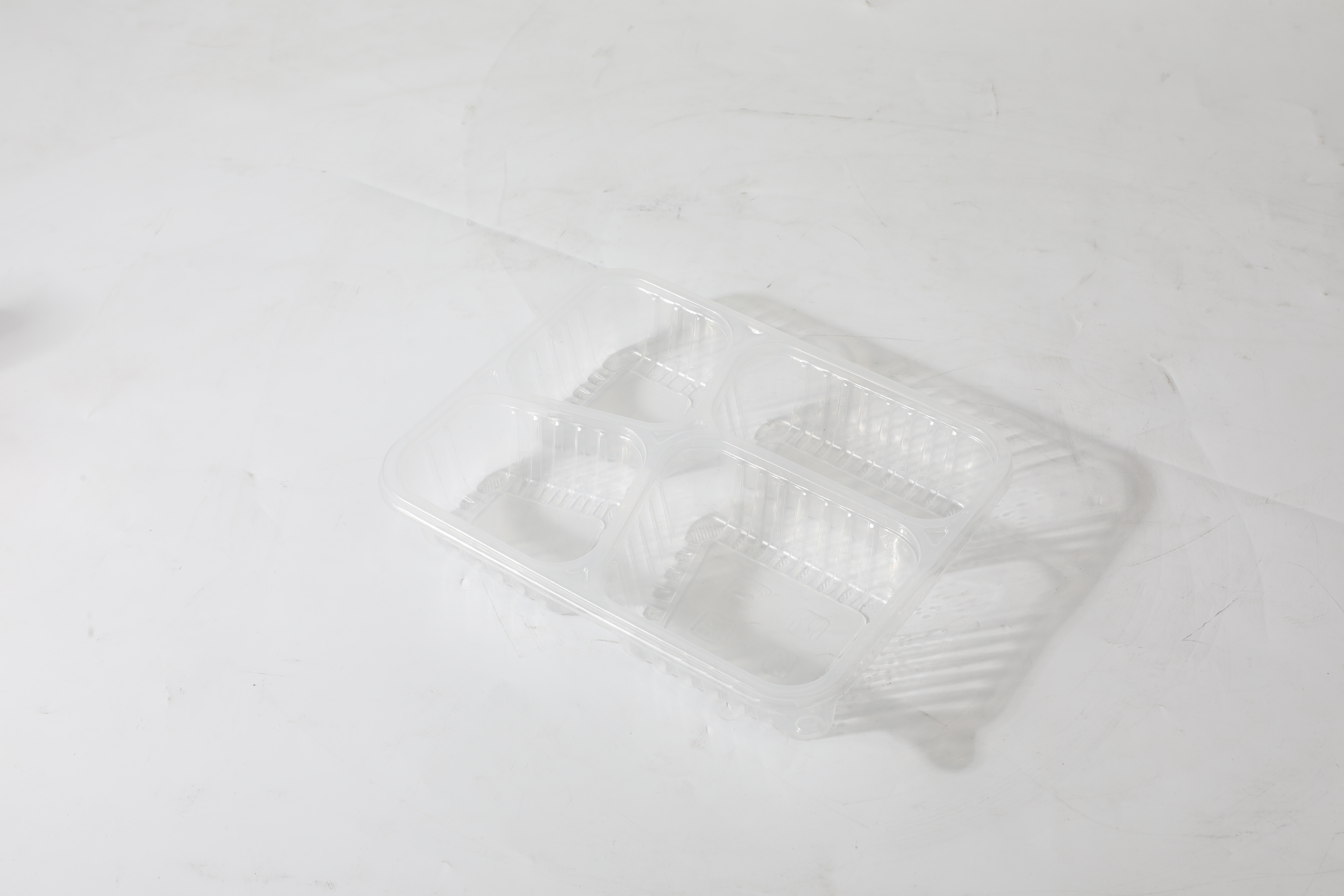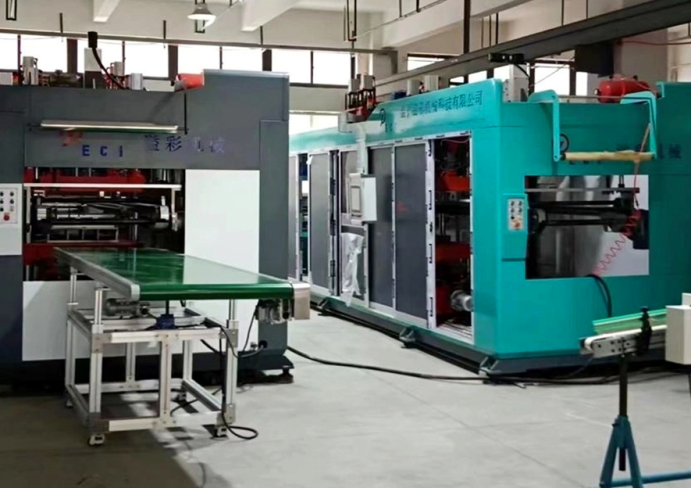
Plastic thermoforming is a widely utilized manufacturing process where a plastic sheet is heated to a pliable forming temperature, shaped to a specific mold, and trimmed to create a usable product. The technique has gained significant attention across various industries due to its cost-effectiveness, design flexibility, and scalability. Whether in the packaging sector, automotive parts production, or consumer electronics, plastic thermoforming has proved to be a critical method for shaping plastic materials into desired forms.
This article will delve into the key characteristics of plastic thermoforming, with an emphasis on how its adaptability, economic feasibility, and efficient resource utilization make it a preferred solution for modern production demands. We'll explore the technological and practical facets of the process, offering comparative insights and use-case examples to highlight its benefits and limitations. Data analysis and industry insights will also provide context for evaluating the long-term viability of plastic thermoforming in today's manufacturing landscape.

Strong Adaptability
One of the most recognized advantages of plastic thermoforming is its remarkable adaptability. This process can handle a variety of thermoplastics including PVC, PET, PS, ABS, HDPE, and polycarbonate, making it highly versatile across applications.
Key Adaptive Features:
Material Flexibility: Different plastic types can be thermoformed depending on end-use requirements such as durability, clarity, or food-grade safety.
Design Variety: Complex shapes, textures, and finishes can be achieved with ease.
Scalability: Whether it's a short-run prototype or a large-scale production order, the process accommodates both with minimal adjustments.
| Material | Use Case | Reason for Selection |
| PET | Food Packaging | High clarity, recyclable |
| ABS | Automotive Interiors | Toughness, aesthetic appeal |
| HDPE | Industrial Trays | Chemical resistance |
The plastic thermoforming process also supports design modifications and prototyping, allowing manufacturers to quickly adapt products to changing market demands. This flexibility has positioned thermoforming as a valuable process in product development and innovation cycles.
Wide Range of Applications
The wide range of applications is another standout characteristic of plastic thermoforming, spanning across industries such as:
Medical and Pharmaceutical: Blister packs, diagnostic trays, and surgical equipment packaging.
Automotive: Interior panels, dashboards, and engine covers.
Retail Packaging: Clamshells, blister packaging, and display trays.
Food and Beverage: Disposable containers, lids, and meal trays.
Consumer Electronics: Housings for gadgets, protective casing, and inserts.
Thermoforming in Automotive vs. Injection Molding:
| Attribute | Thermoforming | Injection Molding |
| Setup Time | Short | Long |
| Tooling Cost | Low | High |
| Design Flexibility | High | Moderate |
| Ideal Volume | Low to Medium | High |
The process is particularly effective for low to medium volume production, where injection molding might be cost-prohibitive due to high tooling costs. Moreover, plastic thermoforming is increasingly being used in sustainable product design, replacing traditional materials like metals and glass in several applications.
Less Equipment Investment
One of the most compelling economic advantages of plastic thermoforming is its low initial equipment investment. Unlike injection molding, which requires expensive molds and high-pressure systems, thermoforming operates under relatively low pressures and uses simpler, often less expensive equipment.
Breakdown of Equipment Cost Comparison:
| Equipment Type | Thermoforming Setup Cost | Injection Molding Setup Cost |
| Forming Machine | $20,000 - $100,000 | $100,000 - $500,000 |
| Mold Fabrication | $2,000 - $15,000 | $20,000 - $100,000 |
| Maintenance Cost | Low | High |
This cost advantage makes plastic thermoforming especially attractive for:
Because of the lower capital barrier, small to medium enterprises (SMEs) can enter the market more easily and remain competitive.
Convenient Mold Manufacturing
Another key strength of plastic thermoforming is the convenient and rapid mold manufacturing. Thermoforming molds can be made from:
These molds are relatively inexpensive and quick to produce compared to those used in other methods.
Mold Types and Use Scenarios:
| Mold Type | Material | Cost Range | Use Duration |
| Prototype Mold | Wood/Plaster | $500–$2,000 | Short-term |
| Production Mold | Aluminum | $5,000–$15,000 | Long-term |
Thanks to CAD and CNC machining, molds can be quickly modified, reducing lead times and improving design flexibility. This enables businesses to:
Test multiple design iterations efficiently
Reduce the risk of costly product design errors
Adapt faster to market feedback
High Production Efficiency
Plastic thermoforming stands out for its high production efficiency, especially for medium-sized batches. The cycle time per part can be as low as 10–60 seconds depending on complexity, material, and machine speed.
Efficiency Metrics:
| Parameter | Thermoforming | Blow Molding | Vacuum Forming |
| Avg. Cycle Time | 15–45 sec | 30–90 sec | 20–60 sec |
| Operator Skill | Moderate | High | Low |
| Throughput Rate | High | Medium | Medium |
Other factors that contribute to high efficiency include:
Automatic trimming systems
Inline heating and cooling
Stacking and packaging automation
These improvements significantly reduce human labor costs while increasing output quality and consistency.
High Waste Utilization Rate
Plastic thermoforming also supports a high rate of material recycling and waste utilization. During trimming and forming, excess plastic can be:
Re-ground
Re-processed
Reused for future sheets
This not only helps in lowering raw material costs but also aligns with modern sustainability practices.
Environmental Benefit Summary:
| Category | Thermoforming | Injection Molding |
| Scrap Recovery | Easy | Moderate |
| Energy Efficiency | Higher | Lower |
| Use of Recycled Material | High | Medium |
Many thermoforming operations use post-industrial and post-consumer recycled plastics, contributing to circular economy models. This characteristic has made plastic thermoforming an eco-friendlier option in industries striving for carbon neutrality and waste reduction.
Conclusion
In conclusion, plastic thermoforming is a powerful and adaptable manufacturing process, known for its cost-effectiveness, design flexibility, and eco-friendly nature. From the adaptability of materials and wide application scope to low equipment costs and rapid mold fabrication, every feature is designed to deliver value.
As businesses increasingly look for lean manufacturing techniques with lower upfront investments and faster turnarounds, plastic thermoforming offers a compelling solution. With rising consumer awareness of sustainability and ongoing material innovation, the relevance of this process is set to grow even further in the coming years.
For those considering a strategic entry into the plastic manufacturing sector or looking to optimize their existing production lines, investing in plastic thermoforming capabilities could be a decisive competitive edge.
FAQs
Q: What is plastic thermoforming?
A: Plastic thermoforming is a manufacturing process that involves heating a plastic sheet until pliable, forming it to a mold, and trimming it to create a final part.
Q: What are the advantages of plastic thermoforming?
A: Key advantages include low equipment cost, rapid prototyping, flexible design capabilities, high waste utilization, and broad material compatibility.
Q: Is plastic thermoforming suitable for high-volume production?
A: It is best suited for low to medium production volumes. For extremely high volumes, injection molding may be more efficient.
Q: Can recycled plastic be used in thermoforming?
A: Yes. Many thermoforming processes incorporate recycled plastics, making it an eco-friendly option.
Q: What industries commonly use plastic thermoforming?
A: Industries include packaging, automotive, medical, food and beverage, and consumer electronics.
Q: How does thermoforming compare to injection molding?
A: Thermoforming has lower tooling costs, faster setup times, and better design flexibility, while injection molding excels in producing large volumes.
Q: What is the difference between vacuum forming and plastic thermoforming?
A: Vacuum forming is a subset of plastic thermoforming where vacuum is used to draw the heated plastic over the mold. Thermoforming can include both vacuum and pressure-assisted methods.
















